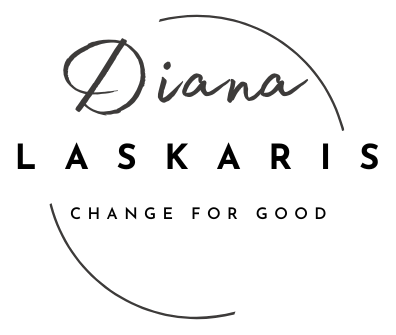Imagine standing at the edge of a misty path, unable to see what lies ahead. Unpredictable times challenge even the most resilient among us, presenting a landscape of uncertainty that can feel both overwhelming and isolating. Yet, within this complexity lies an opportunity for growth, understanding, and profound personal transformation.
Understanding Uncertainty’s Emotional Landscape
Uncertainty arrives like an unexpected guest, disrupting carefully laid plans and challenging our sense of control. It’s a universal experience that connects us, a shared human condition that reminds us of our fundamental vulnerability and strength. The most powerful approach isn’t to fight against uncertainty, but to develop a compassionate relationship with the unknown.
Just Breathe…
Breathing emerges as our first and most accessible tool. This isn’t about complicated techniques, but about intentional, mindful connection with our body’s natural rhythms. When anxiety rises, return to your breath. Inhale slowly for four counts, hold for four, exhale for four. This simple practice creates a momentary sanctuary, a small window of calm in the midst of emotional turbulence.
Building True Resilience
Resilience is more than just surviving difficult times. It’s about developing a robust internal framework that allows us to bend without breaking. Consider resilience as a muscle that can be systematically strengthened through intentional practices.
Body
Physical resilience starts with small, consistent actions. Regular sleep patterns create a foundation of stability. Nutrition plays a crucial role, not through extreme diets, but by understanding how food impacts our mood and energy. Hydration, often overlooked, directly influences our body’s stress response. Simple choices like drinking water, eating whole foods, and maintaining a consistent sleep schedule build physiological resilience.
Heart
Emotional resilience requires a more nuanced approach. Practice what psychologists call “emotional agility” — the ability to navigate life’s twists and turns with self-acceptance, clear-sightedness, and an open mind. This means acknowledging difficult emotions without becoming consumed by them. Develop a practice of identifying your emotions. Saying something like, “I’m feeling anxious right now,” creates some distance and perspective. It also helps create a sense of knowing when surrounded by unknowns.
Mind
Mental resilience involves challenging negative thought patterns. When catastrophic thinking emerges, ask yourself, “What’s the most likely outcome?” Most of our worst-case scenarios never materialize. One thing I keep in mind is the many times I have tortured myself with disasters of my own imagination that have never even come close to happening. Reminding myself of what actually happened makes it easier to realize how infrequent true worst cases actually happen in life. Create a practice of realistic optimism by acknowledging challenges while focusing on the potential for a neutral or positive outcome, accept what you cannot control and maintain a sense of personal autonomy.
Navigating Media and Information Overload
The constant stream of news can feel like an unrelenting assault on our nervous system. Media consumption has become a significant source of uncertainty and anxiety. Developing an intentional relationship with information becomes crucial for maintaining emotional balance.
Consider implementing a “media diet” that nourishes rather than depletes. This doesn’t mean complete isolation, but rather mindful consumption. Set specific times for checking news, perhaps 15 minutes in the morning and evening. Choose reputable sources that provide context rather than sensationalism. Seek out solutions-oriented journalism that highlights human resilience and progress.
When news feels overwhelming, practice active filtering. Ask critical questions like, “What can I actually influence in this situation?” Most global events require systemic change beyond individual control. Redirect your energy towards local actions, community engagement, or personal growth that feels meaningful and manageable.
Pathways to Calm: Mindful Movement
The Language of Mindful Movement
Movement becomes a powerful bridge between emotional processing and inner peace. The practice of finding calm is about creating moments of connection between your body and your mind. Imagine a practice that moves beyond traditional exercise, a holistic approach that embraces the wisdom of ancient traditions like qigong, tai chi, and yoga. I find that the stretching and focus from these helps loosen the stress I hold in my body.
These practices offer more than physical benefit. They become a language of healing, a way of communicating with our inner landscape through intentional movement and breath.
Healing Environments: Creating Space for Calm
The environments where we practice this sort of mindful movement can dramatically enhance the experience. A quiet corner of a living room can become a sanctuary of stillness, with soft morning light filtering through windows. Outdoor spaces offer their own medicine, a grassy park where morning dew softens the ground, a small balcony overlooking a tree-lined street, or a secluded beach where waves provide a natural rhythm for breathing.
Imagine doing tai chi in a community garden, where the gentle movements mirror the swaying of nearby plants. Picture a morning yoga session on a wooden deck, surrounded by the sounds of birdsong and rustling leaves. Even a small apartment can transform into a space of healing. Just clear a few square feet of floor space, roll out a simple mat, and creating a bubble of calm amidst urban noise.
Adapting Practice to Your Space and Moment
The practice doesn’t require expertise or elaborate equipment. A chair can become a tool for gentle stretching. A wall offers support for balance practices. A quiet room or a sunny patch of ground outside becomes a meditation space. The key is finding movements that feel both grounding and liberating, practices that allow the body to release tension and the mind to find momentary peace.
Some people find profound calm in early morning practices, when the world is still quiet. Others discover their rhythm in evening sessions that help transition from the day’s activities. The time matters less than the intention. Just create a consistent practice of returning your focus on breath, body, and the present moment.
The Essence of Mindful Movement
Qigong offers gentle flowing movements that can be practiced in almost any space. Tai chi becomes a moving meditation that can transform a small indoor area or a expansive outdoor landscape into a healing environment. Yoga adapts to whatever space is available, from a full studio to a small patch of floor, from a beach to a tiny urban studio.
You don’t have to do the movements perfectly. You just need to be fully present. Each breath becomes an anchor. Each movement a conversation with the body’s wisdom. Whether standing on a mountain trail or in the corner of a living room, these practices remind us that calm is always available, we just need to create the space to receive it.
Visualization for Calm and Relaxation
Of course, hypnosis and mindful meditation are two ways on the top on my list to relax the mind and body. Through suggestion, visualization, and focused attention these practices can bring inner peace and positive centering that provide a pathway to calm and enhance physical relaxation. There are no tools necessary and they provide benefits that range from physical, emotional, and mental stress relief to changing your own negative programming or habits leading to an even greater sense of well-being. To learn more about how I can help you on this path, take a look at How It Works.
Finding Meaning and Connection
Connection emerges as a crucial lifeline during unpredictable times. This goes beyond sharing every worry or seeking constant reassurance. It’s about creating supportive relationships that allow space for genuine emotional experience. Consider developing a “balance buddy,” someone who can listen without trying to fix, who can hold space for the complexity of your experience, and for whom you can do the same.
The most profound resilience comes from viewing challenges not as insurmountable obstacles, but as opportunities for growth. Like a garden that requires periods of rest before blooming, our lives often need moments of not-knowing to facilitate significant growth.
Embracing Personal Agency
Each step into uncertainty is an act of courage. It represents a fundamental trust in our capacity to adapt, learn, and grow. We are not defined by our ability to control every outcome, but by our willingness to move forward with compassion, curiosity, and hope.
As the landscape of life continues to shift, remember that resilience is not about being unbreakable. It’s about being flexible, about finding strength in vulnerability, about understanding that our worth is not determined by external circumstances, but by our capacity to meet each moment with an open heart.
Breathe. Trust. Begin again.

